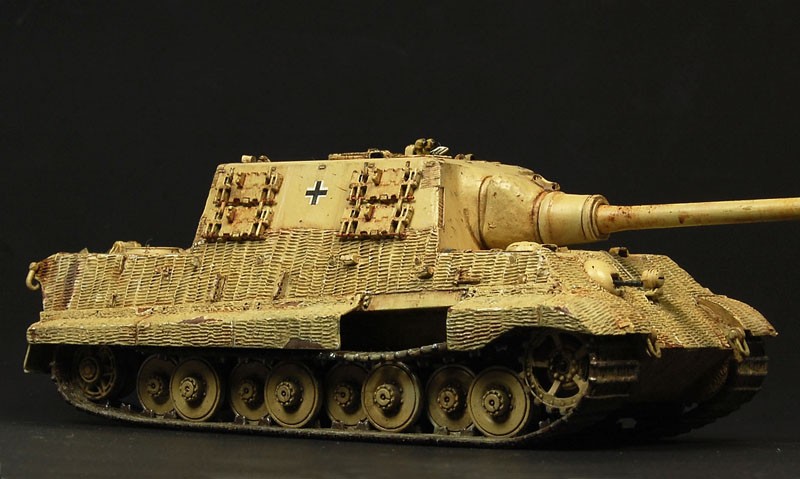It was my understanding that this was never done and that the skirts were attached/replaced then it was sent to another facility for the Zimmerit coating.
But here is a pic of it and it is clear that it is all the way down....? Any thoughts?


They didnt coat the sideskirts as a magnetic mine would not do much damage to the tank if it stuck to the sideskirt (except destroying the sideskirt) however there is a famous Jagdtiger, I believe it is a Porsche suspension one that has it on the sideskirts...General Jumbo01 wrote:So far as I can see from my extensive 'research' (scanning endless Google search results when l applied zimmerit sheet to my KT!) the zimmerit was usually applied to the hull sides but not to the skirt extensions. I'm not sure why as l assume magnetic mines could be slapped on the skirts but maybe they flexed too much for the coating to stay in place. I also noticed that there was some prototypical variations.

Seems logical, thanks for your input, Zimmerit is one of those subjects that gets rough!HERMAN BIX wrote:Remember that the early process for factory application of Zim involved curing it with gas burners.
I assume that as these Porsche versions were in such small numbers that the paste would have be applied, troweled, and cured with gas, them base coated.
Then once the zim was set and base coat applied, the guards were fitted and already base coated.
For rail transport the guards were removed, along with the wide tracks a la Tiger 1 .
Should the guards suffer damage, or not be refitted after rail transport for some reason, the hull was still protected by the zim coating.
Later versions I assume may have been coated with zim in a more forward area, after rail transport, so may not have had the guards removed to spread the stuff right down.
That’s my reasoning but history may be otherwise.
I would go with the picture as evidence, no mistaking it’s on there!